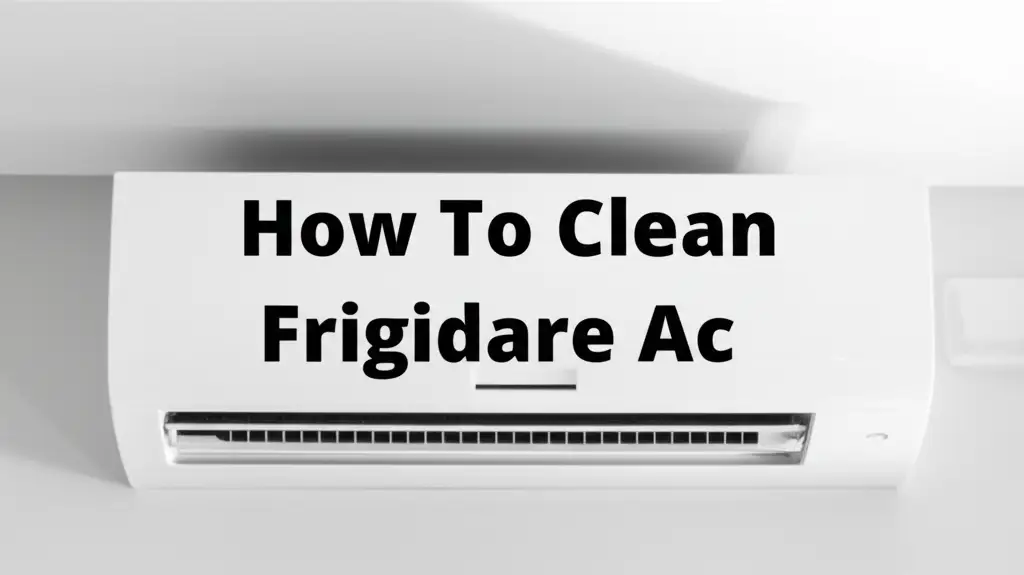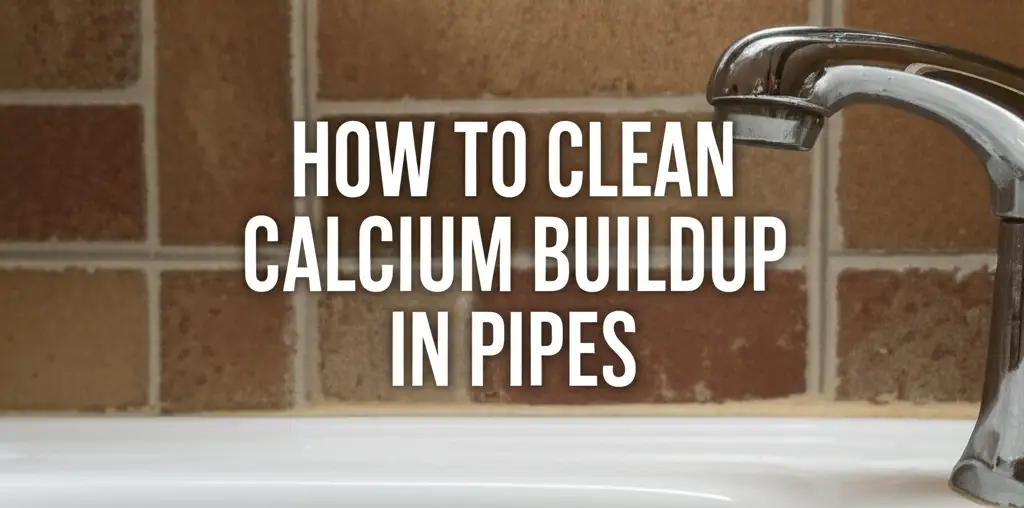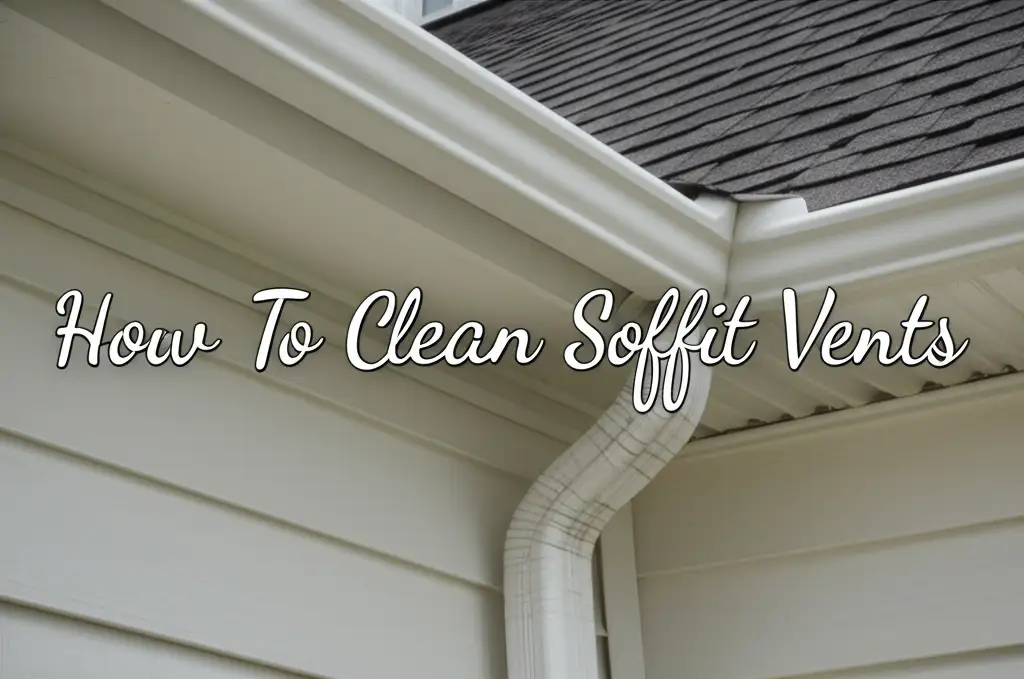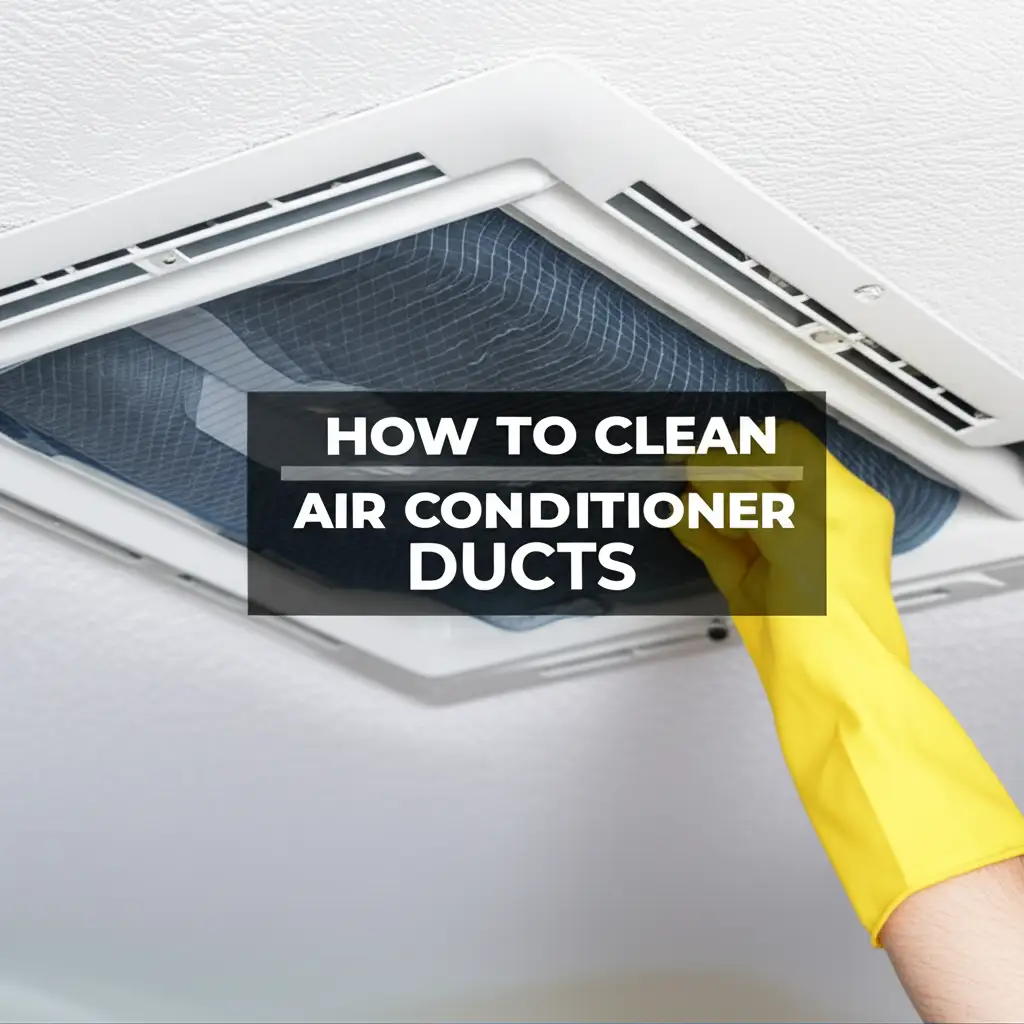· Home Maintenance · 13 min read
How To Clean Shower Head From Limescale
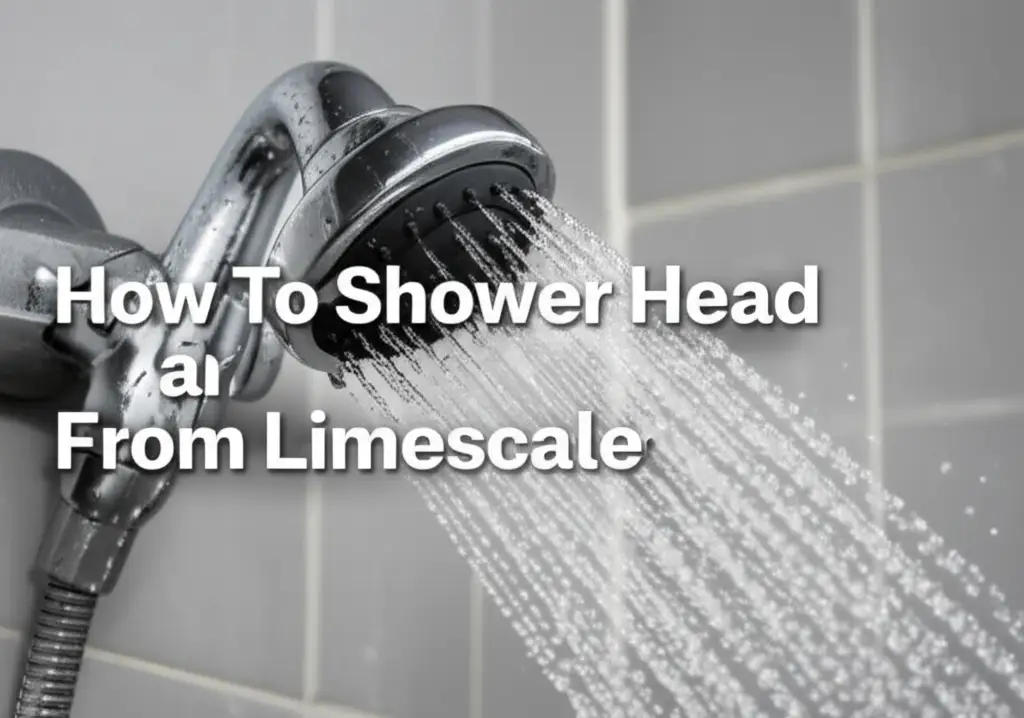
Restore Your Shower: How to Clean Limescale from Your Shower Head
Has your shower head lost its sparkle? Is the water flow weak and inconsistent? You likely have limescale buildup. Limescale is a common problem, especially in homes with hard water. It forms when minerals like calcium and magnesium, dissolved in water, deposit on surfaces as water evaporates. Cleaning your shower head from limescale is a simple yet crucial task for a better shower experience and longer-lasting fixtures. This guide provides detailed, practical methods for tackling even stubborn limescale. We will explore various techniques, from natural household remedies to more intensive cleaning solutions, ensuring your shower head delivers a powerful, clear spray once again.
Takeaway:
- Vinegar is your best friend: White vinegar effectively dissolves limescale.
- Regular cleaning prevents buildup: Wipe down your shower head often.
- Choose the right method: Simple soak, bag method, or detached cleaning.
- Safety first: Always ventilate and wear gloves with stronger cleaners.
- Prevent future issues: Consider water softeners or frequent wiping.
How to effectively clean a shower head from limescale:
You can effectively clean a shower head from limescale by soaking it in white vinegar for several hours or overnight. For attached heads, use a plastic bag filled with vinegar. For detached heads, immerse them fully in a bucket of vinegar. Afterwards, scrub any remaining deposits and rinse thoroughly.
Understanding Limescale: The Unseen Culprit in Your Shower
Limescale is a common issue for many households. It consists of hard, chalky deposits, mainly calcium carbonate. These deposits form when hard water evaporates, leaving minerals behind. Hard water contains high levels of dissolved minerals like calcium and magnesium. When water heats up, these minerals become less soluble. They stick to surfaces, creating the white, crusty buildup you see on your shower head.
Over time, limescale significantly impacts your shower’s performance. It clogs the small nozzles of your shower head. This reduces water pressure. It also makes water spray unevenly. Some nozzles might even stop working entirely. Beyond functionality, limescale looks unsightly. It gives your shower head a dull, dirty appearance. This diminishes the overall cleanliness of your bathroom. Addressing limescale is not just about aesthetics. It also extends the life of your shower fixtures. It helps prevent costly repairs or replacements in the future. Regular cleaning helps maintain efficient water flow and preserves the appearance of your bathroom. Ignoring limescale allows it to harden further. This makes it much harder to remove later on.
Gathering Your Limescale Cleaning Arsenal
Before you start tackling that stubborn limescale, collect all necessary tools and materials. Having everything ready saves time and makes the process smoother. You probably have most items around your home already. We focus on common, safe, and effective household products for most cleaning tasks.
First, gather your primary cleaning agents. White vinegar is excellent for dissolving mineral deposits. It is acidic, which breaks down the alkaline limescale. Baking soda is another fantastic natural cleaner. It acts as a mild abrasive and boosts vinegar’s cleaning power. For tougher stains, you might consider a specialized limescale remover. These products are stronger and faster. Always check the label for safety instructions.
Next, collect your tools. A sturdy plastic bag, like a Ziploc bag, is perfect for soaking an attached shower head. A rubber band or string helps secure the bag in place. You will need an old toothbrush or a small scrubbing brush. These tools help dislodge stubborn deposits. A microfibre cloth or a soft sponge is useful for wiping and polishing. For personal protection, always wear rubber gloves. This protects your hands from cleaning solutions. Safety goggles are also a good idea, especially when using stronger chemical cleaners. Finally, have some clean water ready for rinsing. This comprehensive kit prepares you for effective limescale removal.
The Classic Method: Cleaning Your Shower Head with Vinegar
The white vinegar method is a highly effective way to remove limescale. It is simple, natural, and requires minimal effort. This method works well for most shower heads still attached to the wall. It saves you the trouble of unscrewing the fixture. My personal experience shows this method works wonders with consistent use.
First, prepare your cleaning solution. Fill a strong plastic bag, like a freezer bag, with plain white vinegar. Ensure there is enough vinegar to fully submerge the shower head’s nozzles. You can add a small amount of water if you wish, but full-strength vinegar works best for heavy buildup. You might also find this method useful if you are learning how to clean shower head with vinegar.
Next, secure the bag around your shower head. Place the bag over the shower head, making sure all the limescale-affected parts are submerged in the vinegar. Use a strong rubber band, zip tie, or string to tightly secure the bag to the shower arm. This prevents the vinegar from leaking out. Allow the shower head to soak for several hours. For light buildup, two to three hours may be enough. For heavy limescale, leave it overnight. The acid in the vinegar slowly breaks down the mineral deposits.
After soaking, remove the bag carefully. Turn on the shower to flush out any loosened limescale. Use an old toothbrush or a small scrubbing brush to gently scrub away any remaining deposits from the nozzles. A toothpick or pin can clear individual clogged holes. Finish by wiping the shower head with a clean cloth. This simple approach effectively restores water flow. It also leaves your shower head sparkling clean.
Baking Soda & Vinegar: A Powerful Limescale Duo
For tougher limescale deposits, combining baking soda with vinegar offers an even stronger cleaning solution. This duo creates a fizzing reaction that helps loosen stubborn mineral buildup. It is an excellent choice when plain vinegar needs a boost. I’ve found this combination particularly effective for long-standing hard water stains. You might consider this a key step when learning how to clean with vinegar and baking soda.
You can use baking soda and vinegar in a few ways. One common method is to create a paste. In a small bowl, mix a quarter cup of baking soda with a few tablespoons of white vinegar. Add vinegar slowly until a thick paste forms. The mixture will fizz, which is normal. Apply this paste directly to the affected areas of the shower head. Use an old toothbrush or a sponge to spread it evenly over the nozzles and any visible limescale.
Allow the paste to sit on the shower head for at least an hour. For very heavy buildup, let it sit for several hours. The paste adheres well to vertical surfaces. This gives the ingredients time to work on the limescale. The abrasive nature of the baking soda, combined with the acidic power of vinegar, effectively breaks down the mineral deposits.
After the waiting period, scrub the shower head thoroughly. Use the toothbrush to scrub the nozzles and crevices. The fizzing action and the paste itself help to dislodge the softened limescale. Rinse the shower head with hot water to wash away all paste residue and loosened particles. For very stubborn spots, you might need to repeat the process. This method helps restore full water pressure. It also leaves the shower head looking much cleaner.
For Tough Cases: Detaching and Soaking Your Shower Head
Sometimes, limescale buildup is so severe that the bag method or paste method simply is not enough. In such cases, removing the shower head for a complete immersion soak is the best approach. This allows the cleaning solution to fully penetrate all parts of the fixture. This is a very effective way to clean hard water from shower head.
First, you need to detach the shower head from the shower arm. Most shower heads unscrew counter-clockwise by hand. If it is too tight, use an adjustable wrench. Wrap a cloth around the base of the shower head or the shower arm nut. This protects the finish from scratches. Turn the wrench gently but firmly until the shower head loosens. Once detached, inspect the threads for any rubber washers. Remove them carefully if possible. This prevents damage from the cleaning solution.
Next, prepare your soaking solution. Find a bucket or a deep basin. Fill it with enough white vinegar to completely submerge the shower head. For extremely heavy limescale, you can use a stronger descaling solution. Read product labels carefully before using chemical solutions. Place the detached shower head into the vinegar. Ensure it is fully immersed.
Allow the shower head to soak for a prolonged period. An overnight soak is often recommended for severe cases. You might even leave it for up to 24 hours. The longer soak time gives the acid ample opportunity to dissolve the deep-seated limescale. After soaking, remove the shower head. Use an old toothbrush or a stiff-bristled brush to scrub away any remaining deposits from the nozzles and crevices. Flush the shower head with water. Reattach it to the shower arm, ensuring the washer is properly seated. Turn on the water to flush out any final debris. This deep cleaning method should restore your shower head to optimal performance.
Chemical Cleaners: When and How to Use Them Safely
While natural methods like vinegar and baking soda are often effective, some severe limescale buildups require a more potent approach. This is where commercial chemical limescale removers come into play. These products contain stronger acids designed to dissolve stubborn mineral deposits quickly. Using them correctly and safely is very important.
Before using any chemical cleaner, read the product label entirely. Pay close attention to the active ingredients, usage instructions, and safety warnings. Most limescale removers contain strong acids like hydrochloric acid, sulfamic acid, or phosphoric acid. These chemicals can be corrosive. They may cause skin irritation, eye damage, or respiratory problems if not handled properly.
Always ensure the area is well-ventilated when using chemical cleaners. Open windows and turn on exhaust fans. Wear appropriate personal protective equipment. This includes rubber gloves to protect your hands. Safety glasses or goggles are also crucial to protect your eyes from splashes. Avoid direct contact with skin and eyes.
Apply the cleaner according to the product’s directions. Some cleaners are sprays, others are gels or liquids. Follow the recommended contact time. Do not leave chemical cleaners on surfaces longer than specified. Over-exposure can damage finishes. After the recommended time, rinse the shower head thoroughly with plenty of clean water. Ensure all chemical residue is removed. Never mix different chemical cleaners. This can create dangerous fumes or reactions. If limescale persists, reapply the cleaner carefully or consider professional help. Using chemical cleaners effectively resolves extreme limescale issues when natural options fall short.
Preventing Future Limescale Buildup: Simple Habits
After all your hard work cleaning your shower head, you want to prevent limescale from returning quickly. Regular maintenance and simple habits can significantly reduce mineral buildup. This saves you time and effort in the long run. Consistent prevention is key to keeping your shower head functioning well and looking great.
One of the easiest preventative measures is to wipe down your shower head after each use. Keep a dedicated microfibre cloth in your shower. After showering, quickly wipe the nozzles and surface of the shower head. This removes most water droplets before they evaporate. It prevents the minerals from depositing. This simple habit takes only a few seconds. It makes a big difference in preventing hard water stains. This is also a good habit to prevent hard water stains on shower glass.
Consider a weekly quick clean. Once a week, spray the shower head with a solution of equal parts white vinegar and water. Let it sit for 10-15 minutes, then wipe it off and rinse. This proactive approach tackles any new mineral deposits before they harden. It stops limescale from accumulating into thick layers. For homes with extremely hard water, you might do this twice a week.
Investing in a water softener is another long-term solution. A water softener removes the minerals that cause hard water. This prevents limescale buildup throughout your entire plumbing system, not just on your shower head. While a more significant investment, it provides comprehensive protection. Shower head filters are also an option. They attach to your shower arm and filter out some minerals, reducing limescale. Changing these filters regularly is important for them to remain effective. By adopting these simple habits, you can keep your shower head clean. You can ensure optimal performance for a longer time.
FAQ Section
Q1: How often should I clean my shower head from limescale? A1: You should clean your shower head from limescale at least once every three to six months. If you live in an area with very hard water, monthly cleaning might be necessary. Regular, light cleaning or wiping after each use can extend the time between deep cleans. Pay attention to water flow and visible buildup to determine your specific cleaning schedule.
Q2: Can limescale permanently damage my shower head? A2: Yes, severe and prolonged limescale buildup can permanently damage your shower head. It can corrode internal components and clog nozzles beyond repair. Over time, it reduces water pressure and causes an uneven spray pattern. Regular cleaning prevents this damage. It helps extend the lifespan of your shower head.
Q3: Is vinegar safe for all shower head finishes? A3: White vinegar is generally safe for most shower head finishes, including chrome, stainless steel, and brushed nickel. However, avoid leaving vinegar on delicate or antique brass, bronze, or gold finishes for extended periods. Always test vinegar on an inconspicuous area first. Rinse thoroughly after cleaning to prevent any potential damage.
Q4: What if limescale doesn’t come off after cleaning? A4: If limescale persists after cleaning with vinegar, try a longer soak. For very stubborn deposits, detach the shower head and immerse it fully in undiluted white vinegar for 24 hours. Alternatively, use a commercial limescale remover designed for extreme buildup. Always follow product instructions and safety warnings carefully.
Q5: Can I use lemon juice instead of vinegar for cleaning? A5: Yes, you can use lemon juice as an alternative to vinegar for cleaning limescale. Lemon juice contains citric acid, which is effective at dissolving mineral deposits. It also leaves a fresh scent. Use it in the same way as vinegar. Soak the shower head in lemon juice or a lemon juice and water solution.
Q6: Does boiling water help remove limescale? A6: Boiling water can help loosen some limescale, especially if the deposits are not too thick. The heat can cause the minerals to expand and crack. However, it is not as effective as an acidic solution like vinegar for dissolving the deposits. Use boiling water as a first step or to rinse after an acid soak.
Conclusion
Cleaning your shower head from limescale is a straightforward process. It significantly improves your shower experience. It also extends the life of your plumbing fixtures. By understanding the causes of limescale and applying effective cleaning methods, you can restore your shower head’s performance. You can maintain its appearance. Whether you opt for the classic vinegar soak, the powerful baking soda paste, or a complete detachment for intensive cleaning, the right solution exists for every level of buildup.
Remember, prevention is always better than cure. Simple daily habits, like wiping your shower head after use, can drastically reduce future limescale formation. Regular maintenance saves you time and effort in the long run. It ensures your shower provides a consistent, strong stream of water every time you step in. Make cleaning your shower head a regular part of your home maintenance routine. Enjoy a cleaner, more efficient shower.
- limescale removal
- shower head cleaning
- hard water
- DIY cleaning
- bathroom maintenance

